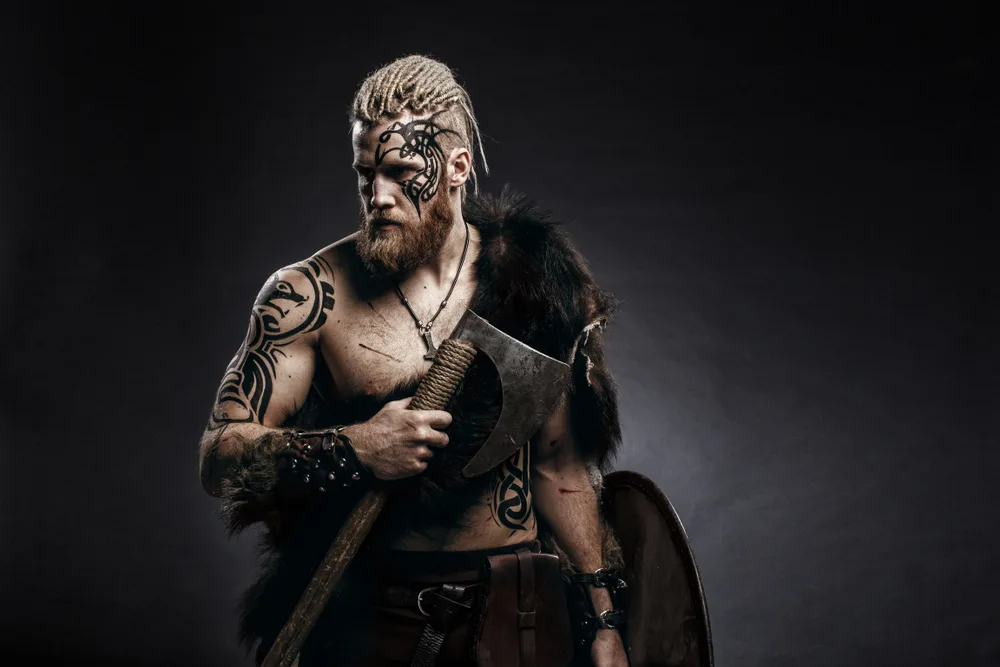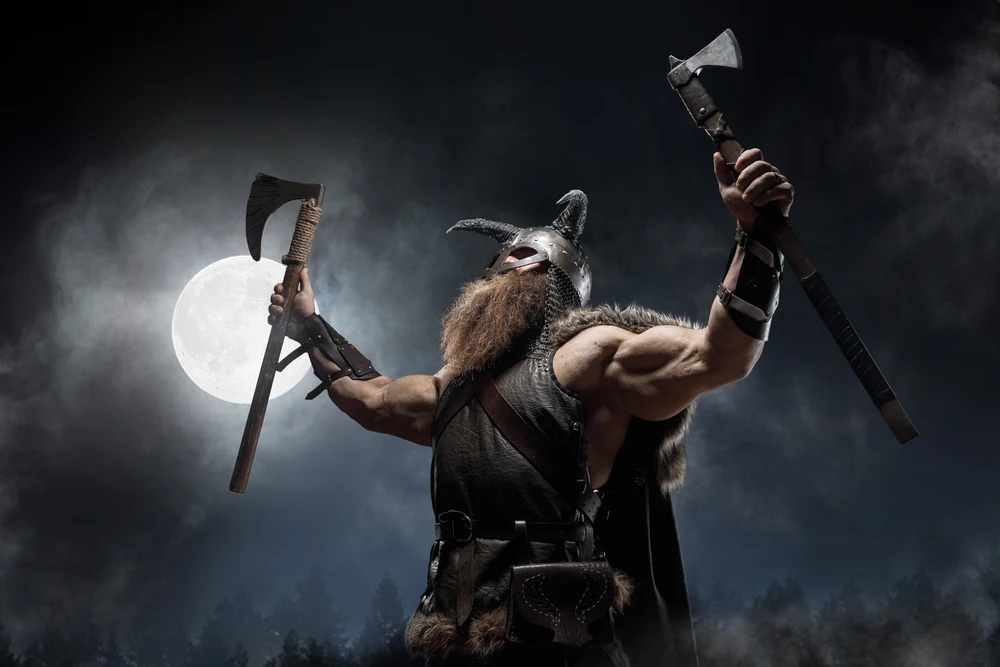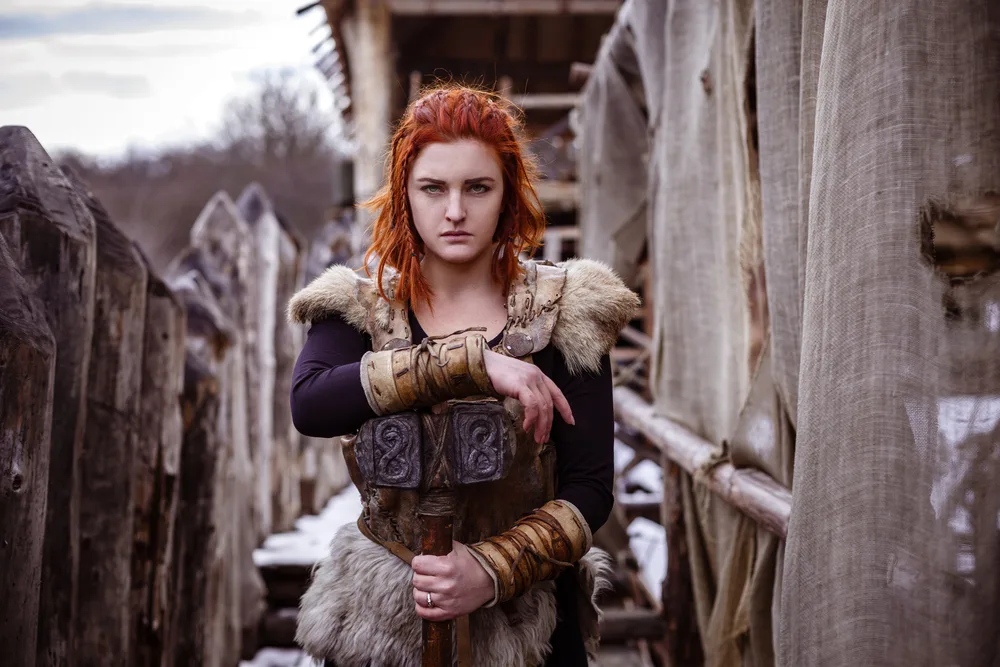Jump to:
Vikings (víkingr in Old Norse) are well-known for being fierce Scandanavian warriors, but what were their haircare routines like? Did Vikings have dreads? We’ll show you all you need to know below.
Did Vikings Have Dreads?
Many Viking men and women had dreadlocks. The Vikings would often braid these dreads together to form thick plaits, though they could pull them into tight buns or knots.
However, not all Vikings had dreadlocks, and hairstyle was often associated with social class. If you’d like to adopt an authentic Viking hairstyle, you’ll want to know whether these people sported dreadlocks.
Understanding how Vikings wore their hair is also an excellent way to understand more about Viking culture and practices! Keep reading to discover what hairstyles the Vikings had and how hairstyle affected a Viking’s standing in their local community.
What Hairstyles Did the Vikings Have?

Fotokvadrat/Shutterstock
One of the best ways to determine whether Vikings had dreads is to explore the different types of hairstyles associated with Viking culture.
After all, familiarizing yourself with a culture’s most popular hairstyles is an excellent way to understand which hairdos were popular and which were rare. Generally, Vikings wore their hair in one of the following styles:
- Reverse Mullet
- Braids
- Dreadlocks
- Shaved
Reverse Mullet
Long hair was the norm for most Viking communities, but it could also be a nuisance. Long hair was likely to fall into your face running into combat, reducing your field of vision and potentially opening you up to attack.
Some Viking men preferred to wear their hair in a “reverse mullet” style. This means they kept the top portion long (typically braided) but cut the sides and back very short.
Braids
Most Vikings (men and women) wore their hair in braids. Doing so helped to keep hair out of the face while working or fighting. Still, Viking women tended to wear complex plaits made of braids, while men’s hairstyles were often more straightforward.
Dreadlocks
When you keep your hair long and braided most days, there’s a chance that it could naturally begin to form into dreadlocks. Dreads weren’t as common throughout Viking communities as other hairstyles.
But Viking warriors likely developed dreads while spending long bouts of time away from home. This development wasn’t probably considered problematic, as it helped keep a warrior’s hair out of their face.
Shaved
It’s possible that some Vikings shaved most of their hair off or went entirely bald. However, the evidence to support this idea is scant.
One of the strongest indicators of occasional shaving or baldness comes from Leo the Deacon (a Greek historian), who wrote that the prince of Kievan Rus “…shaved his head completely, except for a lock of hair that hung down on one side.”
Still, because long hair was seen as an indicator of social status in many Viking villages, it’s unlikely that a shaved head was the preferred hairstyle for most Vikings.
Was Hairstyle Important in Viking Culture?

Fotokvadrat/Shutterstock
Though it’s typically associated with a specific culture, the term Viking actually refers to the act of sailing to a distant land and pillaging its resources. But contrary to popular belief, the Vikings weren’t solely comprised of warriors.
While many of the men and women living in Scandinavia during the Viking Age did participate in Viking activities, many also stayed at home to tend to farming, construction, and child-rearing duties.
Depending on your role in the community, you likely wore a specific hairstyle to denote your status.
How Viking Men Styled Their Hair
Viking men had the most options in terms of acceptable hairstyles. For example, they could wear long, unbraided hair, hair braided into long rope-like locks, or long on top but short along the back and sides.
Some Vikings even shaved their heads completely, though this practice was far less common than wearing their hair long. After all, short hair had some pretty negative associations in Viking culture.
How Viking Women Styled Their Hair
Viking women were just as integral to Viking raids are their male counterparts. As such, many hairstyles women wore in Viking communities were similar in style to masculine hairdos.
For example, many Viking women wore long hair, braiding their locks to form thick plaits that they could wrap or weave into tight buns. The primary difference between a Viking woman’s and a Viking man’s hair was the state of the sides and back.
While it wasn’t uncommon for men to shear off most of the hair on the sides or back of their head, most Viking women kept all of their hair long, keeping it off their neck by braiding and knotting it at the top of the skull.
Read Next: Trending Viking Hairstyles for Women for 2025
How Viking Slaves Styles Their Hair
Sadly, slavery was a common practice throughout ancient civilizations. When the Vikings pillaged resources from villages, they typically gathered people from those areas to take home as slave workers (also called thralls).
These unfortunate individuals would have their hair shorn short to differentiate them from the long-haired Vikings. Consequently, having short hair was a sign of disgrace, as it identified you as an enslaved person with fewer rights and freedoms than the average community member.
Frequently Asked Questions

Selenit/Shutterstock
Below you will find some of the most frequently asked questions regarding Viking hairstyles and dreadlocks. If you have further questions, you might find the answer you’re looking for below!
What kind of hair did Vikings have?
The Vikings had diverse hair types, from thin blonde strands to thick black heads of hair. They wore their hair in many ways, though braids and dreads were likely the most popular hairstyles among Viking men and women.
What cultures had dreadlocks?
Several cultures throughout history have encouraged their people to wear dreadlocks. The Vikings are one group that wore dreadlocks, but ancient Egyptians, Pacific Island cultures, and several indigenous African tribes also commonly wear dreadlocks.
Who had dreadlocks first?
Modern dreadlocks may have originated in Ancient Egypt (as depicted on the Sarcophagus of Kawit) or Ancient Greece.
Still, there’s a good chance that many of the earliest people (including Neanderthals) had dreadlocks. After all, our ancient ancestors focused on survival, not keeping their hair tangle-free.
How do Viking dreads start?
Viking dreads start in much the same way as any other dreadlock. You can get them started by backcombing or hand-rolling your hair. Once the dreads are well-established, you can begin experimenting with different Viking braid patterns.
Did Celts have dreadlocks?
The Celts and Vikings shared several cultural similarities, including hairstyles. However, historical evidence supports the idea that Celts likely wore their hair long or in braids rather than having dreadlocks.
So, Did Vikings Have Dreads?
Some Vikings likely wore dreads, though most likely sported thick plaits of braids or the “reverse mullet” hairstyle. Long hair was common among the Vikings, as short hair was associated with enslavement.
Want more hair styling guides? Click on our logo above to see the most recent hair styling and care guides! We think that you’ll be glad you did. Happy styling!
